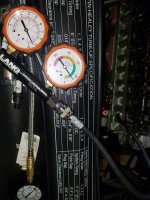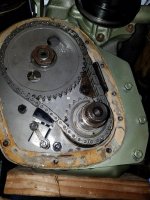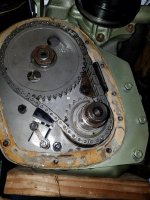Brinkerhoff
Jedi Knight
Offline
Correction , that looks like the intake valve is open and the exhaust is closed which would mean the cam timing were early or advanced. Either way check the point that both valves are open equally , then note the position of the crank pulley marks. I'm involved with a TR3 resurrection in the shop so not thinking clearly evidently!

 Hi Guest!
Hi Guest!

 smilie in place of the real @
smilie in place of the real @
 Pretty Please - add it to our Events forum(s) and add to the calendar! >>
Pretty Please - add it to our Events forum(s) and add to the calendar! >> 










